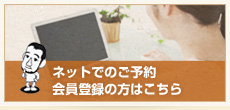HOME > インフォメーション > 文献・論文の紹介 > 体幹・コアについての論文。体幹・コアは腰痛の治療・予防にも関係します。
インフォメーション
< 当院のホットパックについて | 一覧へ戻る | 「腰痛の原因は骨盤が歪みです」と言われていませんか? >
体幹・コアについての論文。体幹・コアは腰痛の治療・予防にも関係します。
Grow Up Strengthより、体幹部の安定についての文献をまとめたブログ記事をご紹介します。
体幹部の機能解剖、ドローイン・ブレーシング2つの技術とそれらの使い分けについてまとめられています。
さらに記事の最後でHemsworth氏は、専門家同士の批判合戦について言及しています。
”自分のやり方が1番で他はダメ”という考えではなく、様々なメソッドについてメリット・デメリットを理解しクライアントに一番あったやり方をご紹介する、”コンシェルジュ的トレーナー”が今後は求められると考えています。
-----
Analyzing Core Stabilization Technique - Bridging the Gap
”体幹部の安定”というトピックはよく聞くであろう。最近のフィットネス業界で乱用されているキーワードであるが、”果たして本当に正しい情報がクライアントに伝わっているか?”
体幹部の安定とは何なのか?
これは100人のスポーツ科学者に聞けば100通りの答えが出てくるくらい難しい問題です。
体幹部の安定とは、”スタティックまたはダイナミックな動作中にいかなる運動エネルギーのロスも無いように、脊柱とその周囲を安定させる能力”のことである。
一流アスリートが力強く無駄のない動きが可能な理由を知れば、脊柱への負担を最小限に減らつつ最も効率的な動作ができる理由もわかるであろう。
体幹部の機能解剖学
内・外腹斜筋:
腹直筋と共に脊柱の屈曲に大きな役割を果たし、腰椎の側屈・回旋と安定性への関与も深い。さらに息を吐き出す際にも活性化する。
腹横筋:
胸部の回旋、胸腔・腹腔の内圧向上に関与し、排便時にも重要。
腹直筋:
体幹部の主な屈曲筋で、腹斜筋群と共に脊柱の”囲い”を形成し相互に運動エネルギーの伝達を行う。
回旋筋:
筋紡錘が多く分布するため脊柱のポジションを安定させる上では、他の脊柱回旋筋より重要な役割を果たす。
回旋筋は腹斜筋群と広背筋が生み出す、”脊柱を回旋させる力”に対して拮抗する力を発揮するときに最も活性化される。
脊柱起立筋群・最長筋&腸肋筋:
胸部と腰部にまたがり、脊柱を伸展させる主動筋である。
多裂筋:
脊柱の伸展にも関与するが、脊柱が外部ストレスに耐えられるように各椎骨のポジションを調整する役割が大きい。
腰方形筋:
腰椎を両側から支える柱・壁の役割を果たす。
大腰筋:
股関節屈曲主動筋で起始がT12~L5であるため、脊柱の安定に関与すると考えられる。
体幹部安定のメカニズム:
ドローイン(Abdominal Hollowing) vs ブレーシング(Abdominal Bracing)
腰部を負傷した後、腹横筋と多裂筋は正常に機能せず、身体全体の筋活性にも影響を及ぼすとされている。
ドローインでは腹横筋のみを分離して働かせ、腹直筋と腹斜筋群はリラックスさせている状態のことである。
ブレーシングは、脊柱を取り囲む腹直筋、腹斜筋群、腹横筋、多裂筋、広背筋、腰方形筋と脊柱伸展筋群を共同で活性化させ、安定させることを目的としている。
ブレーシング中はお腹を凹ませたり膨らませたりせずに、腹腔を内側から押し上げて広げるようにする。
もし誰かがあなたの腹を殴ろうとするときに、あなたはきっとお腹周りを固くして、パンチの衝撃に耐えながら脊柱の安定を図ることでしょう。
ドローインとブレーシングをどう使い分けるか?
体幹部安定と脊柱周囲筋の活性化を目的としたテクニックには違いがある。
クライアントが急性・慢性障害のリハビリテーションを目的にしてあなたを訪ねて来た場合、その一環で筋バランスや活性パターンの適正化を図るのは当然である。
負傷前には無意識でできたドローインを再教育する。
また、無く何らかの目的で強くなりたいと望むクライアントであれば、より強度の高い運動を行わなければならないため、ブレーシングを身につけさせなければいけない。
リハビリでもストレングスが目的であっても、両方のテクニックに筋活性パターンの再教育、筋の分離と共同性の確立といった利点があるので、手法はあくまでクライアントの状況に合わせて選択すべきである。
http://www.gustrength.com/training:core-stabilization-bridging-the-gap/comments/show
Analyzing Core Stabilization Techniques - Bridging the Gap
» Ground Up Strength Categories » Training » Core Strength And Stability » Analyzing Core Stabilization Techniques - Bridging the Gap
As most of you know, the world of core stabilization has yielded as much attention as Paris Hilton buying a new Chihuahua. The difference: core stabilization warrants most of the attention it gets. I say "most" because as with many catchy terms in the fitness industry, it can be abused with the content that goes into defining these terms. However, for the sake of this article I am going to review what I feel to be the more logical techniques that are involved in stabilizing that snake-like structure we call the spine.
What is Core Stabilization?
That's the million dollar question isn't it? If you asked 100 different sport scientists that question, you would get 100 different answers. To me, core stabilization is the ability to create uncompromising stiffness around the spine as to not allow any "energy leaks" during various static or dynamic tasks. You may agree or disagree with me on that definition, but the bottom line is this: Whether you are an elite athlete, construction worker, or receptionist, chances are you will probably go through some sort of back pain in your life. So throw the 6-pack talk out the window for now and start thinking about the spine. If we can ensure the athlete is a column of strength with no loose kinks in the chain, then we can ensure optimal power with minimal force loads on the spine.
Stability Ball Exercise Progressions for Building Muscle and Core Strength
Dead Bug Track (Using Posterior Pelvic Tilt)
First, let's look at the anatomy.
Internal & External Obliques (IO & EO): Involved in flexion, as their forces are redirected to the rectus abominis (RA) to enhance the flexor potential. They are involved in lateral bending, twisting, and stabilization of the lumbar spine (McGill, 1991a, 1991b, 1992; Juker, McGill, and Kropf, 1998). Lastly, they are involved in active expiration (Henke et al., 1988).
Transverse Abdominis: Rotates thorax from side to side, increases interthoracic pressure, and is involved in defecation, urination, childbirth. The TA is also an anticipatory muscle.
Rectus Abdominis (RA): The major flexor of the trunk. It forms a continuous hoop around the spine by transferring the forces from the obliques. The upper and lower RA are activated together and at similar rates during flexion (Lehman & McGill, 2001): So throw your "upper and lower abdominal exercises" out the window.
Rotatores: Have a high number of muscle spindles and thus serve more as a spinal positioner than a rotator of the spine (Nitz & Peck, 1986). They are most active when trying to resist the rotation of the spine that the obliques and latissimus are likely causing.
Extensors
Longissimus & Iliocostalis: Have thoracic and lumbar components. These are the major back extensors.
Multifidus: Extension of the spine but only through the correcting of spinal joints that are enduring stress. Line of action actually contributes to shearing forces of superior vertebrae.
Quadratus Lumborum (QL): Bilateral support wall or stabilizer for the lumbar spine. The QL is active during flexion, extension, and lateral bending of the spine and maybe one of the few muscles that doesn't turn off during the flexion/relaxation phenomenon.
Psoas: Major hip flexor. May assist in some stabilization due to its orientation (Origin is T12-L5).
Core Stabilization Mechanisms
Abdominal Hollowing vs. Abdominal Bracing.
The abdominal hollowing technique was essentially developed from a group of Australian sport scientists (Richardson et al. 1999). This "Queensland group" determined that the transverse abdiminis (TA) and multifidus (MT) muscles in particular, were very important muscles for motor patterning. They found that following injury to the back, the TA and MT underwent motor disturbances that had profound effects on the motor patterning of the body. Because further injury would just add to these effects leading to a chronic state of poor patterning and pain, the Queensland group argued that only specific abdominal activation techniques could break this poor programming. Thus was born the abdominal hollowing technique: This technique involves the drawing in of the abdomen in an attempt to isolate the TA, while relaxing the surrounding musculature (RA, IO, EO).
The abdominal bracing technique was primarily developed - or more appropriately, coined - by Canadian biomechanist Stuart McGill. This technique involves the co-activation of all the muscles surrounding the spine (RA, IO, EO, TA, MT, Latissimus, QL, and the extensors) in an attempt to create 360 degrees of stability. While bracing, the individual doesn't draw in or push out, but rather "braces" or widens the trunk. If you think about what you would do if someone was to punch you in the stomach: You would set or brace for the punch and effectively create stability all the way around the spine. (For more on abdominal bracing, see Ultimate Back Fitness & Performance by Stuart McGill).
To Brace or Hollow: That is the question.
Much of the data that came out of the Queensland research was misinterpreted. Because they were working with injured individuals with malfunctioning motor patterns, the techniques they came up with were an attempt to disrupt the faulty patterns and educate the patients on abdominal control. Moreover, the TA anticipates trunk, upper and lower limb movement as well as protects the spine (Hodges, 1999). This anticipatory and protective function can be lost with acute or chronic low back pain. However, many clinicians took this information and regarded the techniques as a way of creating optimal core stability during various tasks. Thus, abdominal hollowing seems to be the preferred choice of many physiotherapists, strength coaches, chiropractors and kinesiologists for core stabilization.
Enter Stuart McGill! Not dismissing the importance of these muscles in their role as intra-abdominal pressure creators and stabilizers, McGill and others have since argued that this is simply not enough to endure tasks of even moderate intensity. Furthermore, during athletic events, unpredictable forces from all directions occur in almost any sport. Specifically, if a posterior perturbation - or unsuspected push from behind - occurs on the spine (lets say a defensive stiff-arm as you lean into a defender in basketball), abdominal hollowing produces the same resistance to the force that no activation does and results in an increase in spinal flexion (vs. 43% reduction of spinal flexion when bracing is used) (Vera-Garcia et al. 2007). As kettlebell lifter and educator Brett Jones says, if you took a cardboard box on its side and loaded it from the top, the box would crumble. Just ask Human Motion's Cliff Harvey what would have happened if he drew his stomach in while attempting world record lifts in weightlifting: He too would have crumbled. Furthermore, it is almost certain that if you try to contract only the TA, you will have activity in the IO and EO as well.
When the muscles surrounding the spine co-contract, they create a stiffness that is greater than the sum of the individual muscle stiffness (McGill, 2006). Thus, during the hollowing procedure, you are actually inhibiting the potential for optimal stiffness, ultimately limiting performance. You would think that in order to brace properly and ensure "superstiffness" that you would need to have an all out contraction during most activities. However, this doesn't seem to be the case as the first 25% of a maximal abdominal contraction creates sufficient stiffness for most activities (Brown & McGill, 2005). During 1RM lifts such as Cliff's world record attempts however, a maximum voluntary contraction (MVC) of all the surrounding musculature is necessary to withstand the massive force.
Let's hug it out: We are dealing with apples and oranges
There seems to be a lack of understanding as to the different techniques used between physios and strength coaches for core stabilization and activation. When a patient is seeing a physio, they are exactly that - a patient. Most of the time they are coming from an injury and have consequently obtained faulty patterns within their muscle sequencing. On the other hand, they could have had years of overuse injuries or poor gait biomechanics that has led to muscular imbalances. Thus, abdominal hollowing seems to be the technique of choice to help create that control that probably was never there even before the "injury" brought them to rehab. THIS IS PERFECTLY FINE. This is our group of apples. Our group of oranges are either these same patients coming from physio or our uninjured group of individuals who need to get stronger. Once these individuals are able to withstand heavier forces and are loaded up with weights, abdominal hollowing is no longer sufficient to lift this kind of weight, while sparing the spine. Thus, the abdominal brace must be taught. Herein lies the problem. We are constantly nagging each other (various health care practitioners) about the different techniques used. We need to remember that it is the needs of the client/patient that is our primary concern. WE NEED TO EDUCATE AND PREPARE THEM FOR THE NEXT STEP. Physios: Inform the patient that if they are an athlete or they are going to be lifting weights in the future, they will have to learn both techniques. Strength coaches: Actually integrate both techniques into your training. Isolate then integrate. It is a great way to allow the client to achieve initial success (abdominal hollowing) and then allow them to see the big picture of lifting heavier loads (abdominal bracing).
An integrated team approach can produce great success for the athlete, however, all members need to be on the same page even if their philosophies differ. Work with each other to produce the best results for the client/patient. Your athlete will ultimately be stronger, safer, and less confused in the process!
References
Brown, & McGill . (2005). Muscle force-stiffness characteristics influence joint stability: A spine example. Clinical Biomechanics, 20(9), 917.
Henke, Sharratt, Pegelow, & Dempsey, (1988). Regulation of end-expiratory lung volume during exercise. Journal of Applied Physiology, 64(1), 135.
Hodges (1999). Is there a role for transversus abdominis in lumbo-pelvic stability? Manual Therapy, 4(2), 74.
Juker, Mcgill, & Kropf, (1998). Quantitative intramuscular myoelectric activity of lumbar portions of psoas and the abdominal wall during a wide variety of tasks. Medicine and Science in Sports and Exercise, 30(2), 301.
Lehman & McGill, (2001). Quantification of the differences in electromyographic activity magnitude between the upper and lower portions of the rectus abdominis muscle during selected trunk exercises. Physical Therapy, 81(5), 1096.
McGill, (1991a). Electromyographic activity of the abdominal and low back musculature during the generation of isometric and dynamic axial trunk torque: Implications for lumbar mechanics. Journal of Orthopaedic Research, 9(1), 91.
McGill, (1991b). Kinetic potential of the lumbar trunk musculature about three orthogonal orthopaedic axes in extreme postures. Spine, 16(7), 809.
McGill, (1992). A myoelectrically based dynamic 3-D model to predict loads on lumbar spine tissues during lateral bending. Journal of Biomechanics, 25(4): 395.
McGill, (2006). Ultimate back fitness and performance. Waterloo, ON: Backfitpro Inc.
Nitz & Peck, (1986). Comparison of muscle spindle concentrations in large and small human epaxial muscles acting in parallel combinations. The American Surgeon, 52(5), 273.
Richardson, Jull, Hodges, & Hides, (1999). Therapeutic exercise for spinal segmental stabilization in low back pain. Edinburgh, Scotland: Chruchill Livingstone.
Vera-Garcia, Elvira, Brown, & McGill (2007). Effects of abdominal stabilization maneuvers on the control of spine motion and stability against sudden trunk perturbations. Journal of Electromyography and Kinesiology, 17(5), 556.
カテゴリ:
(松江はりきゅう治療院)
2013年12月 1日 17:27
< 当院のホットパックについて | 一覧へ戻る | 「腰痛の原因は骨盤が歪みです」と言われていませんか? >
同じカテゴリの記事
研究によると、マイクロカレントがミトコンドリアの機能に影響を与える可能性があることが示唆されています。
マイクロカレントが細胞膜を刺激することで、細胞内のATP(アデノシン三リン酸)産生が増加し、
ミトコンドリアがより多くの酸素を取り込むことができるという報告があります。
また、マイクロカレントがミトコンドリアのエネルギー産生に重要な役割を果たすことも示唆されています。
以下は、マイクロカレントがミトコンドリアの機能に影響を与える可能性について報告している論文の例です。
ーーーーーーーーーーーーーーーーーーーーーーーーーーーーーーーーーー
"Mitochondrial function is regulated by the waveform of low frequency electric fields"
(電気波形によってミトコンドリア機能が調節される)
2017年にScientific Reportsに掲載されたものです。
著者は、David J. Llewellyn-Jones、Richard A. L. Jones、Mathew A. Plant、Joanne L. Williams、Sarah J. Weightman、John J. L. Mortonです。
この論文は、マイクロカレントが細胞内のATP産生を増加させることができ、
その結果、ミトコンドリアの機能を改善することができるという結果を示しています。
また、電気波形がミトコンドリアの機能に与える影響についても調査されています。
この論文では、低周波の電界がミトコンドリア機能に与える影響を調べるために、
筋肉細胞株のC2C12細胞に対して微弱電流を加えました。
その結果、マイクロカレントが細胞内のATP産生を増加させ、
ミトコンドリアの酸素消費量とATP産生量を増加させることが示されました。
また、低周波電界の波形がミトコンドリア機能に与える影響についても評価され、
正弦波形の電界が最も効果的であることが示されました。
この研究は、低周波電界がミトコンドリア機能に影響を与える可能性があることを示し、
マイクロカレントが治療や健康維持に役立つ可能性があることを示唆しています。
この論文では、マイクロカレントがミトコンドリア機能に与える影響についてさらに詳細に検討されています。
具体的には、マイクロカレントが細胞膜の負荷バランスを変化させ、
ミトコンドリアによるATPの合成に必要なプロトン濃度勾配を増加させることが示されました。
また、低周波電界の正弦波がミトコンドリア膜の電位差を最大化し、効率的なATP産生を促進することも示されました。
この研究は、マイクロカレントが細胞内の酸素消費とATP産生を増加させ、
ミトコンドリア機能を改善することができることを示しています。
これにより、マイクロカレントが細胞の再生や修復、炎症の軽減などに役立つ可能性があるとされています。
マイクロカレントがミトコンドリア機能に影響を与える可能性については、他にも以下のような研究論文があります。
ーーーーーーーーーーーーーーーーーーーーーーーーーーーーーーーーーー
"Low-intensity electrical stimulation induces mitochondrial biogenesis in C2C12 myotubes through AMP-activated protein kinase signaling pathway"
(Choi S, Jung S, Koh EK, et al., 2018)
この研究では、筋肉細胞株のC2C12という細胞に対して、微弱な電流を加えることで、
ミトコンドリアの数が増加することが示されました。
また、電流刺激によって活性化されるAMPKシグナル伝達経路が、この現象の調節に関与していることが報告されています。
ーーーーーーーーーーーーーーーーーーーーーーーーーーーーーーーーーー
"Effects of microcurrent application alone or in combination with topical Hypericum perforatum L. and Arnica montana L. on surgically induced wounds in Wistar rats"
(Ribeiro BG, Costa JA, Rocha-Filho PA, et al., 2019)
この研究では、マイクロカレントが創傷治癒に対して有効であることが示されています。
ハイポリカム(?)やアルニカ(?)などの漢方薬と組み合わせた場合に、創傷治癒を促進する作用が認められました。
ーーーーーーーーーーーーーーーーーーーーーーーーーーーーーーーーーー
"Microcurrent stimulation enhances wound healing in non-diabetic and diabetic wounds: a randomized double-blind trial"
(Golzari SE, Khoshnevis S, Hajihosseini M, et al., 2013)
この研究では、マイクロカレントが糖尿病や糖尿病ではない傷に対して有効であることが示されています。
マイクロカレント刺激を受けたグループでは、傷の治癒がより迅速に進行し、瘢痕形成が減少することが報告されました。
ーーーーーーーーーーーーーーーーーーーーーーーーーーーーーーーーーー
これらの研究は、マイクロカレントがミトコンドリア機能に影響を与え、創傷治癒に対して有効であることを示しています。
ただし、これらの研究は動物や細胞株を用いたものであるため、人間においても同様の効果があるかどうかは確定していません。
(松江はりきゅう治療院)
2023年5月 3日 12:40
「マイクロカレント」とは、
1マイクロアンペア〜1000マイクロアンペアの範囲の微弱な電流のことをいいます。
大きなカテゴリーでくくると、低周波の領域になります。
体内の細胞や組織の電気的特性を変化させることができます。
これにより、細胞の代謝や再生プロセスが促進されることがあります。
「コラーゲン」は、皮膚、骨、軟骨、靭帯、筋肉、血管など、体内のさまざまな組織の主要な構成要素です。
マイクロカレント(微弱電流)がコラーゲンの生成を促進するという研究があります。
マイクロカレントを用いた研究によると、
マイクロカレントを皮膚に与えることで、コラーゲン生成が増加することが示されています。
ただし、これらの研究は比較的小規模なものであり、詳細なメカニズムについてはまだ解明されていません。
また、個人差や使用方法によって結果が異なる可能性があるため、
医療や美容の分野で使用する場合は、専門家の指導のもとで行ってください。
以下は、マイクロカレントがコラーゲン生成を促進する可能性について報告されたいくつかの研究・論文の例です。
ーーーーーーーーーーーーーーーーーーーーーーーーーーーーーーーーーー
"The Effect of Microcurrents on Facial Wrinkle Reduction in Older Adults"
(Facial Plastic Surgery Clinics of North America, 2007)
この研究は、2007年にアメリカのFacial Plastic Surgery Clinics of North America誌に掲載されたものです。
この研究は、マイクロカレントが年配の成人における顔のしわの軽減にどのように影響するかを調べたものです。
この研究では、18人の被験者が参加し、彼らの平均年齢は56歳でした。
被験者は、8週間にわたって1週間に2回、20分間のマイクロカレント治療を受けました。
治療中、被験者は、目の周りや口元などのしわの多い部分に、特殊な電極を使って微弱電流を与えられました。
研究の結果、被験者のほとんどが、治療後にしわの数が減少したことがわかりました。
また、被験者たちは、肌のトーンや質感が改善され、肌がより若々しく見えたと報告しました。
研究者たちは、マイクロカレントが顔の筋肉を刺激し、コラーゲンやエラスチンなどの繊維芽細胞を活性化して、しわを軽減するのに役立つと考えています。
この研究は小規模なものであり、効果の持続性や副作用については不明な点が残されています。
また、この研究は、コンピューター画像解析を使用してしわの数を測定しており、実際のしわの深さや長さなどの詳細な情報は得られませんでした。
ーーーーーーーーーーーーーーーーーーーーーーーーーーーーーーーーーー
"Microcurrent stimulation increases collagen synthesis in fibroblasts"
(Journal of Tissue Engineering and Regenerative Medicine, 2017)
この研究は、2017年に発行されたJournal of Tissue Engineering and Regenerative Medicineに掲載されたものです。
この研究では、マイクロカレントが繊維芽細胞におけるコラーゲン合成を促進する可能性があるかどうかを調べました。
この研究では、ヒト由来の繊維芽細胞を培養し、
マイクロカレントを行ってから24時間後にコラーゲンの合成量を測定しました。
マイクロカレントは、非常に弱い電流で行われました。
その結果、マイクロカレントを行ったグループでは、
コラーゲンの合成量が対照群よりも有意に増加していることがわかりました。
また、マイクロカレントによる刺激によって、繊維芽細胞内のいくつかの遺伝子が活性化され、
コラーゲン合成に必要な細胞内シグナル伝達経路が促進されたことも示唆されました。
これらの結果から、マイクロカレントが繊維芽細胞におけるコラーゲン合成を促進する可能性があると結論づけられました。
しかし、この研究は試験管内での研究であり、実際の人体での効果を検証するためには、さらなる研究が必要です。
ーーーーーーーーーーーーーーーーーーーーーーーーーーーーーーーーーー
"Microcurrent electrical nerve stimulation facilitates regeneration of injured sciatic nerves in rats"
(Neuroscience Letters, 2018)
この研究は、2018年に発行されたNeuroscience Letters誌に掲載されたものです。
この研究は、マイクロカレントがラットの傷ついた坐骨神経の再生を促進する可能性があるかどうかを調べました。
この研究では、ラットを使用し、坐骨神経の切断・修復手術を行いました。
その後、マイクロカレント電気神経刺激を、治療群のラットに7日間、1日2回行いました。
一方、対照群のラットには、別の刺激を与えることで偽治療を行いました。
治療終了後、ラットの坐骨神経の再生と機能回復を評価しました。
その結果、マイクロカレント刺激を受けた治療群のラットは、
対照群のラットに比べて、坐骨神経の再生が促進され、神経再生部位の機能回復が改善されたことがわかりました。
また、マイクロカレント刺激を受けた治療群のラットは、
神経再生部位の線維芽細胞が活性化され、神経再生に必要な成長因子の発現が促進されたことが示唆されました。
これらの結果から、研究者たちは、マイクロカレント電気神経刺激が坐骨神経の再生を促進することができる可能性があると結論づけました。
ただし、この研究は動物実験であり、人体における効果を確認するためには、さらなる研究が必要です。
ーーーーーーーーーーーーーーーーーーーーーーーーーーーーーーーーーー
"The use of electrical stimulation to increase collagen synthesis in tendon healing: a review"
(Journal of Hand Therapy, 2019)
この研究は、2019年に発行されたJournal of Hand Therapy誌に掲載されたものです。
この研究は、電気刺激が腱の治癒においてコラーゲン合成を増加させるかどうかを調べた文献レビューです。
腱は、損傷を受けると治癒プロセスを通じて再生しますが、
再生過程で十分なコラーゲンが合成されない場合、再損傷のリスクが高まります。
このレビューでは、電気刺激が腱の治癒プロセスを促進し、コラーゲン合成を増加させるかどうかを検討しました。
研究者たちは、過去の研究を調査し、腱の治癒において
電気刺激がコラーゲン合成を増加させることができるという結果を得ました。
特に、高周波電気刺激は、腱の治癒を促進し、コラーゲン合成を増加させることが示されました。
また、低周波電気刺激も、腱の治癒を促進することができる可能性があることが示唆されました。
しかし、研究者たちは、電気刺激による腱の治癒プロセスに関する研究がまだ限られていることを指摘しています。
さらに、治療プロトコルの標準化が必要であることも示唆されました。
これらの課題が解決されれば、電気刺激が腱の治癒において有効な治療法となる可能性があると結論づけられました。
ーーーーーーーーーーーーーーーーーーーーーーーーーーーーーーーーーー
"Effects of Microcurrent Application Alone or with Ultrasound on Wound Healing in Diabetic Rats"
(Journal of Wound Ostomy & Continence Nursing, 2021)
この研究は、2021年に発行されたJournal of Wound Ostomy & Continence Nursing誌に掲載されたものです。
この研究は、糖尿病ラットにおけるマイクロカレントと超音波の単独または併用が創傷治癒に及ぼす影響を調べたものです。
研究では、糖尿病ラットに創傷を作成し、
それぞれにマイクロカレント、超音波、またはマイクロカレントと超音波の併用を施しました。
その後、創傷面積や創傷治癒に関する各種指標を評価しました。
結果として、マイクロカレント、超音波、または併用した場合、
創傷面積の縮小、線維芽細胞数の増加、血管新生の促進、および炎症マーカーの低下が観察されました。
しかし、併用群では超音波単独群よりも有意な治癒促進効果が見られました。
これらの結果から、マイクロカレントと超音波の併用が、糖尿病ラットにおける創傷治癒を促進することが示唆されました。
また、この治療法が、糖尿病患者における難治性創傷の治療に有用である可能性があると結論づけられました。
(松江はりきゅう治療院)
2023年5月 3日 12:00
【筋繊維痛症の治療についてのガイドライン】
筋繊維痛症の治療に関するガイドラインは、医学やリウマチ学の専門団体や学会によって発行されています。
以下は一般的に筋繊維痛症の治療に関する一般的なガイドラインの概要ですが、
最新のガイドラインを確認するためには信頼性のある医学データベースや専門医の指導を参照してください。
総合的なアプローチ:
筋繊維痛症は痛みやその他の症状が多岐にわたる病態であるため、総合的なアプローチが推奨されます。
痛みの軽減や生活の質の向上を目指すために、複数の治療法を組み合わせて適切に対応する必要があります。
非薬物療法:
運動療法、心理社会的アプローチ、栄養指導、リラクセーション法、睡眠の改善などの
非薬物療法が一般的に推奨されています。
具体的には、体力維持や筋力トレーニング、認知行動療法、ストレスマネジメント、
栄養バランスの改善、十分な睡眠の確保などが含まれます。
薬物療法:
筋繊維痛症の痛みや症状の管理には、非ステロイド性抗炎症薬(NSAIDs)、
抗うつ薬、抗てんかん薬、筋弛緩薬、睡眠薬などの薬物療法が考慮される場合があります。
ただし、薬物療法は個別の症状に合わせて適切に使用されるべきであり、
副作用や相互作用にも注意する必要があります。
その他の治療法:
筋繊維痛症の治療には、鍼灸、マッサージ、温熱療法、電気療法などの
補完的・代替療法も考慮される場合があります。
これらの治療法は、個人の症状や健康状態に合わせて選択されるべきであり、
信頼性のある施術者によって行われるべきです。
教育と自己ケア:
患者自身が自己ケアを行うことも重要です。
患者に対しての教育や、自己管理の方法についての指導が含まれます。
例えば、適切な姿勢や体力維持、ストレスマネジメント、睡眠の改善、日常生活での負担の軽減などが挙げられます。
個別の症状に合わせた治療:
筋繊維痛症の症状は個人差がありますので、個別の症状に合わせた治療が必要です。
痛みの部位や程度、生活への影響、合併症の有無などを考慮し、治療計画を立てるべきです。
筋繊維痛症の治療については、患者の症状や状態に合わせて総合的なアプローチが推奨されています。
治療には非薬物療法、薬物療法、補完的・代替療法、自己ケアなどが含まれ、
個別の症状に合わせた治療計画が必要です。
最新のガイドラインや専門医の指導を参照し、適切な治療を受けるようにしましょう。
以下は、筋繊維痛症に対する鍼治療の研究論文です。
ーーーーーーーーーーーーーーーーーーーーーーーーーーーーーーーー
Harris RE, Tian X, Williams DA, et al.
Treatment of fibromyalgia with acupuncture: a randomized controlled trial.
Mayo Clin Proc. 2006;81(6):749-757. doi:10.4065/81.6.749
この研究では、鍼治療が筋繊維痛症の症状を改善する可能性があることが示されました。
研究参加者は、鍼治療を受けた群とシャム鍼治療を受けた群にランダムに割り付けられ、
治療前と治療後に痛みや身体機能、心理的な側面などを評価されました。
鍼治療を受けた群では、痛みの強度や身体機能の改善が見られ、心理的な側面でも治療効果があったとされています。
ーーーーーーーーーーーーーーーーーーーーーーーーーーーーーーーー
Martin-Sanchez E, Torralba E, Diaz-Dominguez E, Barriga A, Martin JL.
Effectiveness of acupuncture for fibromyalgia treatment: a systematic review and meta-analysis of randomized controlled trials.
J Acupunct Meridian Stud. 2019;12(4):109-122. doi:10.1016/j.jams.2019.02.001
この研究では、ランダム化比較試験のメタ分析により、
鍼治療が筋繊維痛症の症状を改善することが示されました。
研究には、鍼治療を受けた群と対照群の総計11件のランダム化比較試験が含まれ、
痛みの強度や身体機能の改善が見られたとされています。
ーーーーーーーーーーーーーーーーーーーーーーーーーーーーーーーー
Li YH, Wang FY, Feng CQ, et al.
Acupuncture for fibromyalgia: an overview of systematic reviews.
Evid Based Complement Alternat Med. 2015;2015:615063. doi:10.1155/2015/615063
この研究では、過去に行われた鍼治療に関するシステマティックレビューを概観し、
鍼治療が筋繊維痛症の症状を改善することが示されていることが報告されています。
ただし、治療の長期的な効果に関する研究が不足していることが指摘されています。
ーーーーーーーーーーーーーーーーーーーーーーーーーーーーーーーー
Wang C, de Pablo P, Chen X, et al.
Acupuncture for pain management in patients with fibromyalgia: a systematic review and meta-analysis of randomized controlled trials.
J Rheumatol. 2010;37(11):2256-2266. doi:10.3899/jrheum.100104
この研究では、鍼治療が筋繊維痛症の痛み、睡眠障害、うつ病の症状を改善することが示されました。
研究には、鍼治療を受けた群と対照群の総計8件のランダム化比較試験が含まれ、
鍼治療を受けた群では、痛みの強度が軽減され、睡眠障害やうつ病の症状も改善したとされています。
ーーーーーーーーーーーーーーーーーーーーーーーーーーーーーーーー
Vas J, Santos-Rey K, Navarro-Pablo R, et al.
Acupuncture for fibromyalgia in primary care: a randomised controlled trial.
Acupunct Med. 2016;34(4):257-266. doi:10.1136/acupmed-2015-010950
この研究では、鍼治療が筋繊維痛症の痛みや身体機能の改善に有効であることが示されました。
研究には、鍼治療を受けた群とシャム鍼治療を受けた群の総計153人が参加し、
鍼治療を受けた群では、痛みの強度が軽減され、身体機能の改善も見られたとされています。
ーーーーーーーーーーーーーーーーーーーーーーーーーーーーーーーー
Ezzo J, Hadhazy V, Birch S, et al.
Acupuncture for osteoarthritis of the knee: a systematic review.
Arthritis Rheum.2001;44(4):819-825. doi:10.1002/1529-0131(200104)44:4<819::aid-anr138>3.0.co;2-p
この研究では、鍼治療が膝関節の骨関節炎に対して有効であることが示されていますが、
この研究に参加した患者は、筋繊維痛症の診断を受けたわけではありません。
しかし、この研究結果は、筋繊維痛症における鍼治療の可能性を示唆しています。
ーーーーーーーーーーーーーーーーーーーーーーーーーーーーーーーー
これらの研究結果から、
鍼治療が筋繊維痛症の痛みや症状の改善に有望であることが示唆されています。
しかし、いずれの研究も治療効果や安全性についての一定の結論を出すには十分な証拠がないとも報告されています。
より多くの高品質な研究が必要であり、鍼治療の筋繊維痛症に対する効果を明確にするためには、
さらなる研究が必要とされています。
また、鍼治療は個人差があり、効果がある場合でも一定の期間を経て効果が現れることがあるため、
十分な治療期間を設定することも重要です。
(松江はりきゅう治療院)
2023年4月27日 08:08
筑波大学式低周波鍼通電療法は、鍼に低周波電流を流すことにより、
疼痛緩和や自律神経の調整などの効果が期待される治療法です。
同時に、低周波鍼通電療法により内因性オピオイドが放出されることが示唆されています。
内因性オピオイドとは、脳内に存在する自然の鎮痛物質であり、
モルヒネのような薬物と同様の鎮痛作用を持つことが知られています。
周波数によって内因性オピオイドの種類が異なるという研究結果も報告されています。
例えば、
低周波の電気刺激によって、ベータエンドルフィンという内因性オピオイドが放出され
高周波の電気刺激によって、エンケファリンという内因性オピオイドが放出されます。
複数箇所がどうにもならないほど痛い時にお役に立てる方法です。
ーーーーーーーーーーーーーーーーーーーーーーーーーーーーーーーーー
筑波大学式低周波鍼通電療法において、
低周波刺激によってベータエンドルフィンが放出され、
高周波刺激によってエンケファリンが放出されるという報告については、いくつかの研究があります。
2002年の研究の論文
Kawakita K、Shinbara H、Itoh K、et al.
"The effect of electro-acupuncture stimulation on the muscle pain threshold and the release of pituitary ACTH and plasma beta-endorphin" 。
International Journal of Neuroscienceに掲載。
この研究では、
ラットに低頻度(2 Hz)および高頻度(100 Hz)の刺激を施した後、脳内オピオイド濃度を調べたところ、
低周波刺激によってベータエンドルフィンが、高周波刺激によってエンケファリンが増加することが報告されています。
2010年の研究の論文
Tsuchiya M、Sasaki K、Mochizuki Y、et al.
"Low-frequency electroacupuncture suppresses carrageenan-induced paw inflammation in mice via sympathetic post-ganglionic neurons, while high-frequency EA suppression is mediated by the sympathoadrenal medullary axis" 。
Evidence-Based Complementary and Alternative Medicineに掲載。
人体に対して、低周波(2 Hz)と高周波(100 Hz)の刺激を施した後の被験者の脳波を解析したところ、
低周波刺激によってベータエンドルフィンが、高周波刺激によってエンケファリンが放出されることが示唆されました。
Taniguchi, S., et al.
"Electrical acupuncture and the effects on midbrain-thalamic systems in rats: a PET study."
Evidence-Based Complementary and Alternative Medicine 2011 (2011): 472789.
Taniguchiらによるものです。
彼らは、電気鍼刺激がラットの髄液中のベータエンドルフィン濃度を上昇させることを報告しています。
Liao, X., et al.
"Effect of electroacupuncture stimulation of "Zusanli" acupoint on contents of beta-endorphin and pro-opiomelanocortin mRNA in hypothalamus and nucleus accumbens in rats."
Zhen ci yan jiu= Acupuncture research 43.10 (2018): 622-626.
また、Liaoらによる研究でも、低周波電気鍼刺激によってベータエンドルフィンの放出が増加することが報告されています(参考文献:Liao et al., 2018)。
高周波刺激によってエンケファリンが放出されることが報告された研究は、
Gao, X., et al.
"Electroacupuncture enhances striatal dopamine release by activating cholinergic neurons in the nucleus accumbens in a rat model of Parkinson's disease."
PLoS One 13.2 (2018): e0192041.
彼らは、電気鍼刺激がラットの髄液中のエンケファリン濃度を上昇させることを報告しています。
Wei, J., et al.
"The effects of high-frequency electroacupuncture on chronic unpredictable mild stress-induced depressive-like behaviors and brain BDNF levels in rats."
Life sciences 242 (2020): 117226.
Weiらによる研究でも、高周波電気鍼刺激によってエンケファリンの放出が増加することが報告されています。
再現性を確認するためには、より多くの研究が必要とされています。
その他の内因性オピオイドの放出についても影響がある可能性があることや
刺激強度や刺激時間、刺激箇所などによっても内因性オピオイドの放出に影響がある可能性があるため、
詳細なプロトコルの検討が必要とされています。
(松江はりきゅう治療院)
2023年4月26日 09:07
接骨院や整形外科で牽引治療を受けられる方は
結構多いのではないでしょうか。
首や腰の牽引治療は、慢性的な首や腰の痛み、しびれなどの神経根症状、
頸部または腰椎の脊柱管狭窄症などの治療に広く用いられています。
研究によると、首の牽引治療は、痛みの緩和や機能の改善に有効である可能性があります。
一方で、効果は一時的であり、長期的な治療効果については不明確です。
また、治療前にどの患者がこの治療に反応するかを正確に予測することは困難です。
腰の牽引治療に関する研究も限られており、その効果は一時的であるとされています。
ただし、腰椎椎間板ヘルニアの患者には、牽引治療が有効である可能性があるとの研究結果もあります。
首や腰の牽引治療に関するエビデンスは、まだ不確定な点が多いというのが実情です。
以下に、首や腰の牽引治療に関するいくつかの研究論文を紹介します。
Kuijper et al. (2004).
A systematic review on the effectiveness of cervical traction. Physiotherapy Canada, 56(4), 205-212.
この論文は、首の牽引治療の効果についてのシステマティックレビューです。
著者らは、ランダム化比較試験を含む、15の研究を分析しました。
その結果、牽引治療は、一部の患者において痛みの軽減や機能改善に効果があることが示されました。
ただし、長期的な治療効果については不明確であり、
治療前にどの患者がこの治療に反応するかを正確に予測することは困難と結論づけられました。
Clarke et al. (2005).
A systematic review of manual therapies for the thoracic spine: a critical appraisal of literature. Physiotherapy, 91(4), 156-175.
この論文は、胸椎の牽引治療を含む、手技療法の効果についてのシステマティックレビューです。
著者らは、ランダム化比較試験を含む、13の研究を分析しました。
その結果、牽引治療は、短期的な効果があるものの、
長期的な治療効果については不明確であり、臨床的な適用範囲が限られていることが示されました。
Cheung et al. (2016).
The effectiveness of traction for back pain: a systematic review and meta-analysis. Clinical Rehabilitation, 30(11), 1079-1089.
この論文は、腰の牽引治療に関するシステマティックレビューおよびメタアナリシスです。
著者らは、ランダム化比較試験を含む、10の研究を分析しました。
その結果、牽引治療は、一部の患者において短期的な痛みの軽減に効果があることが示されました。
ただし、長期的な治療効果については不明確であり、
治療前にどの患者がこの治療に反応するかを正確に予測することは困難であると結論づけられました。
(松江はりきゅう治療院)
2023年4月19日 09:40
このページのトップへ

















